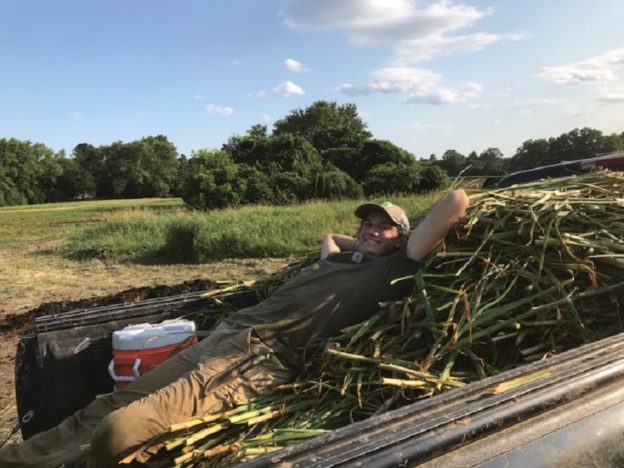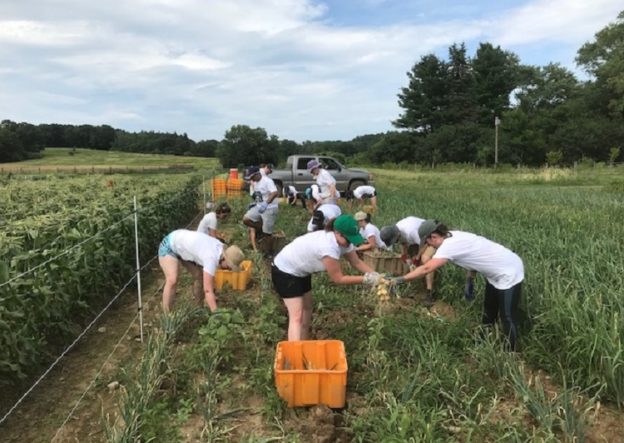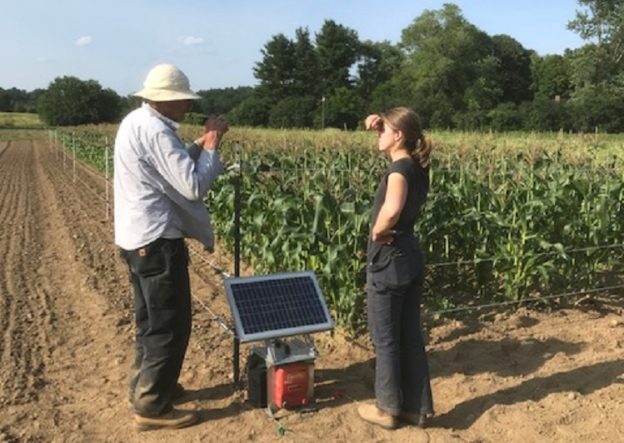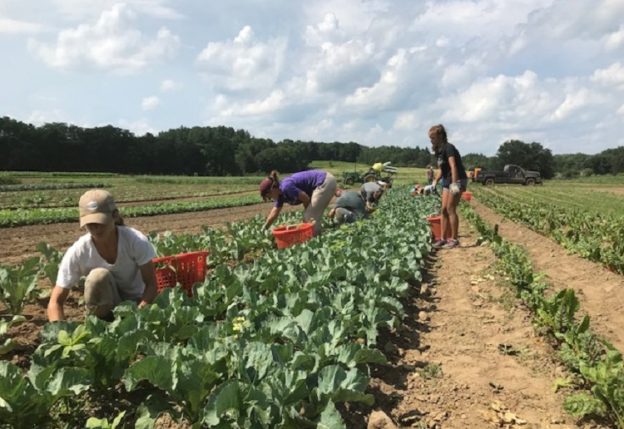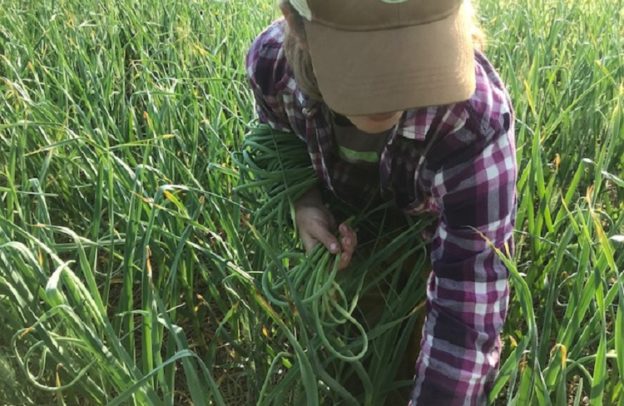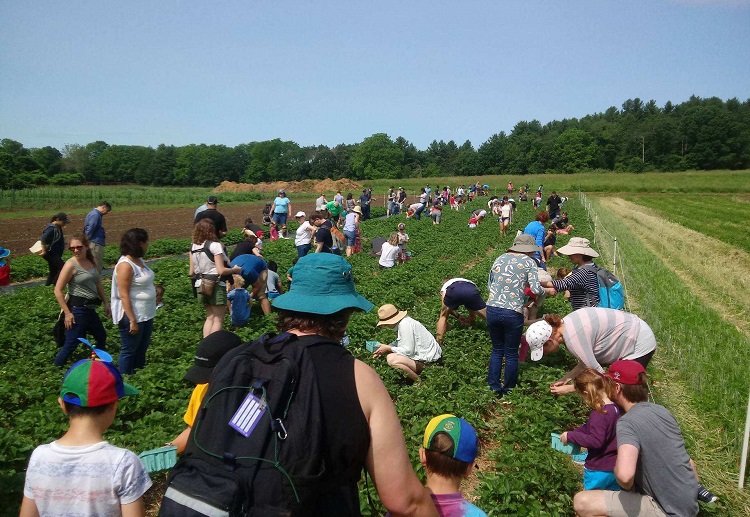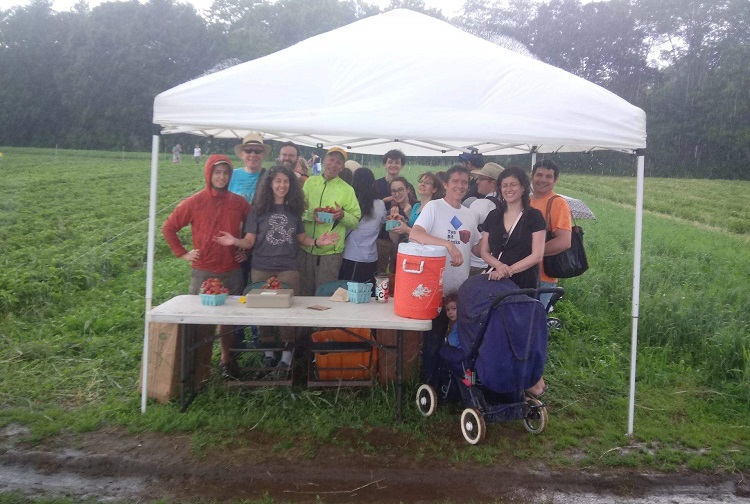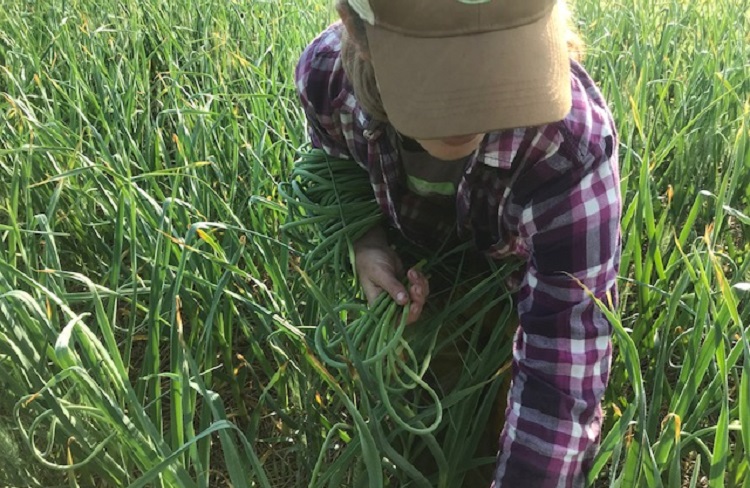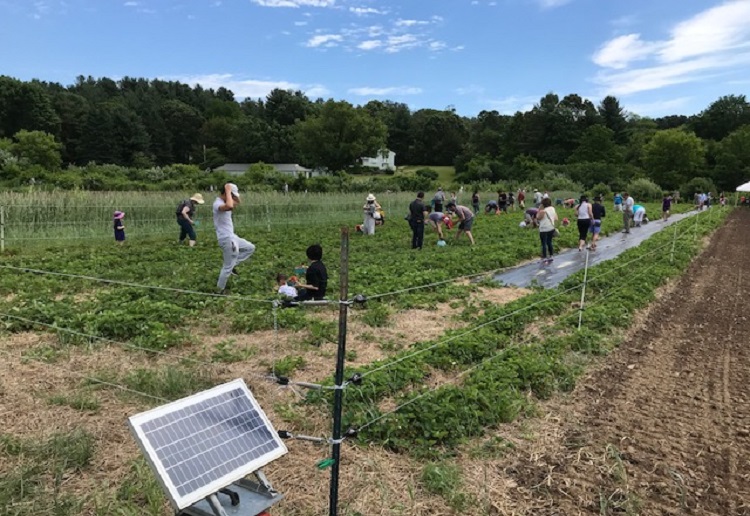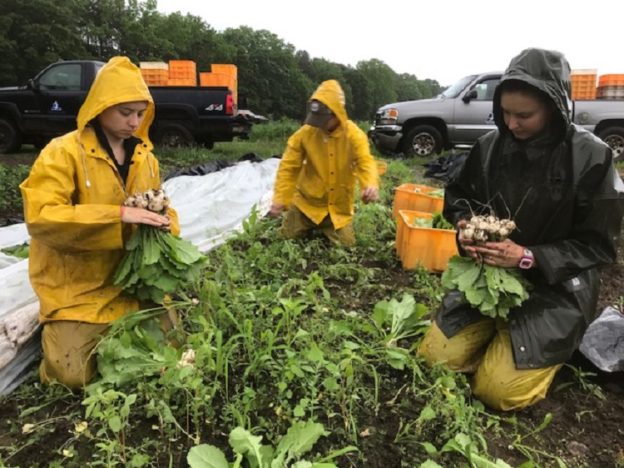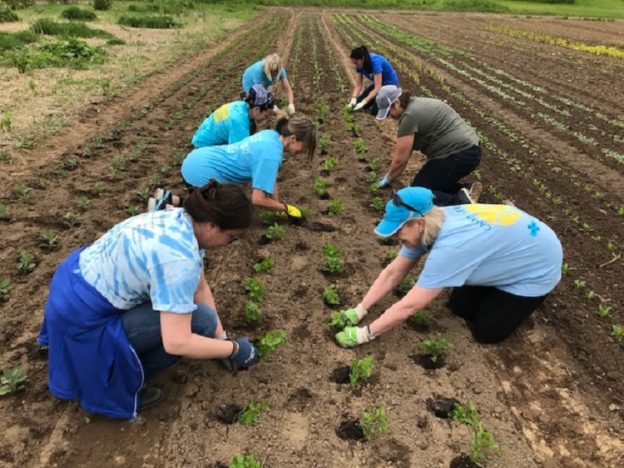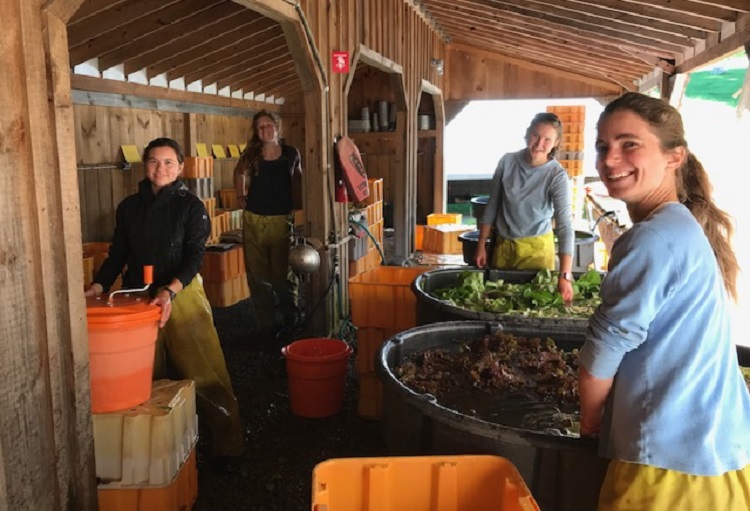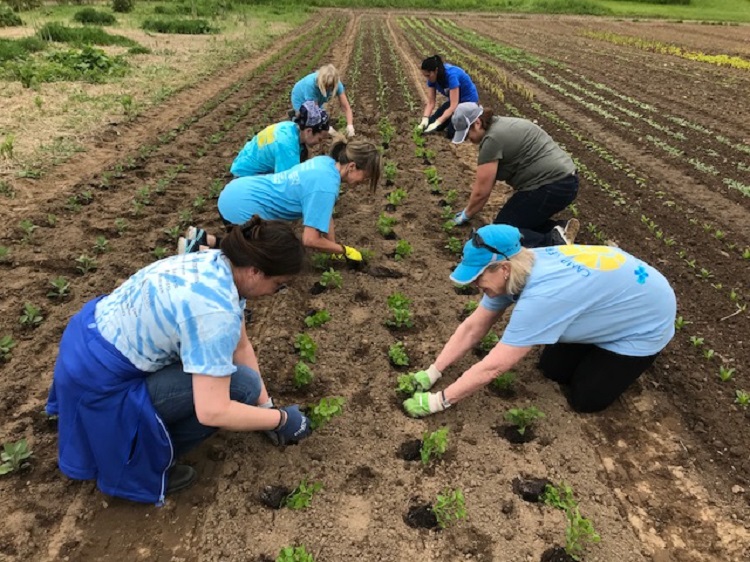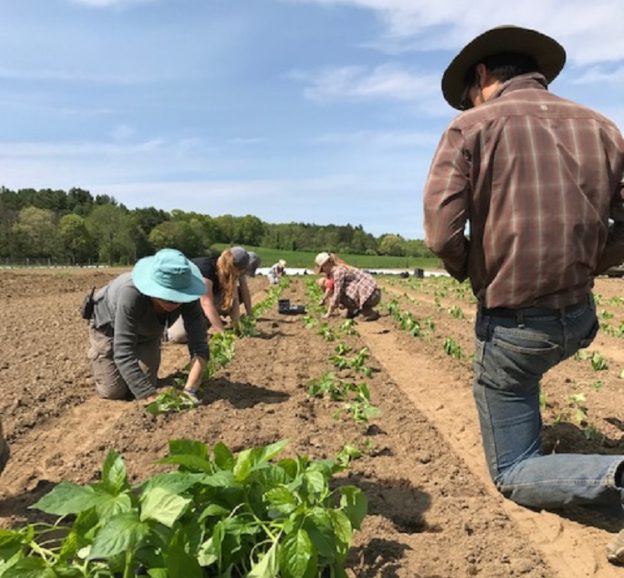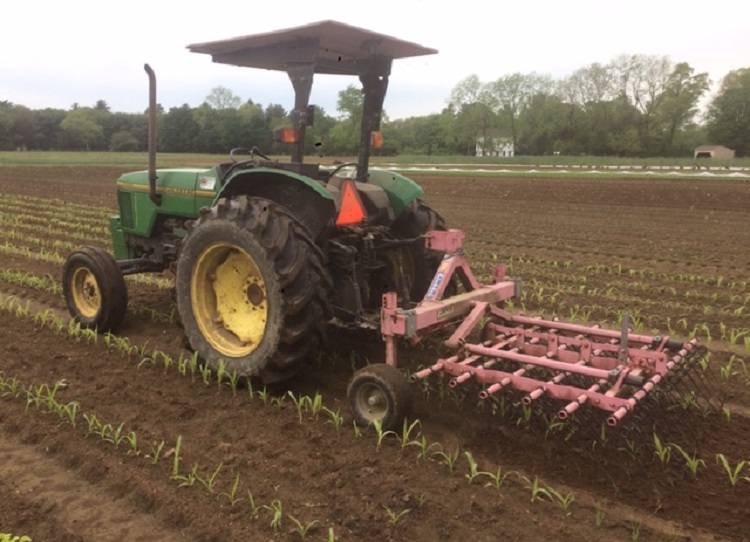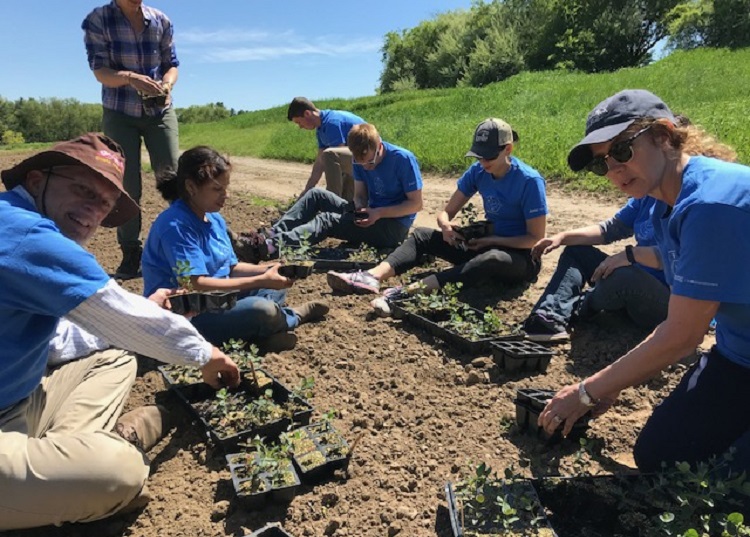The garlic harvest is complete! We spent some part of four days last week pulling, cleaning, trimming and laying out the heads. We usually bring in the crop some time during the first three weeks of July, the timing depends on the state of the leaves. Ideally, you want to harvest when 60% of the leaves are green and 40% yellow. The base of the leaves wrap around the bulb and protect it from decay. If you let the leaves get too yellow, the bulb has a weak wrapper and poor storage potential.
The harvest was on the late side for us, probably due to the cool spring and frequent rains. Animal care workers from AstraZeneca arrived on Thursday and spent their entire volunteer session pulling half the garlic crop (pictured below). That’s the boost we really needed, and we were able to finish the job on Saturday with drop-in volunteers from the community.

The Crops team, with help from volunteer Fred, did a great job power washing all the bulbs and carrying them up into the barn for drying. Last year, we first experimented with washing the bulbs before drying them, and we were happy with the result. The garlic seemed to store better from having the mud blasted off the roots. Thanks all for your good work taking care of this important crop, and a special thanks to my sister’s eldest, Margo, who is currently helping us out, and who seemed to really enjoy all aspects of working with the garlic, even the hot work of hauling the tops out to the compost pile (pictured below)!

The tomatoes are beginning to ripen more quickly now, and, having had a preview, I can tell you they taste exceptionally good this year. We hope to include some in this week’s CSA share, and by the weekend, look for them at the farm stand. We’re harvesting our second round of sweet corn, but we’re likely to have picked through it all by the middle of next week. So if you like corn that hasn’t been treated with any pesticides, get some soon! My favorite summer salad is cucumbers, corn and tomatoes. Don’t cook the corn, just cut it off the cob and mix it with the cukes and tomatoes–delicious!
See you in the field,
Your Farmers


